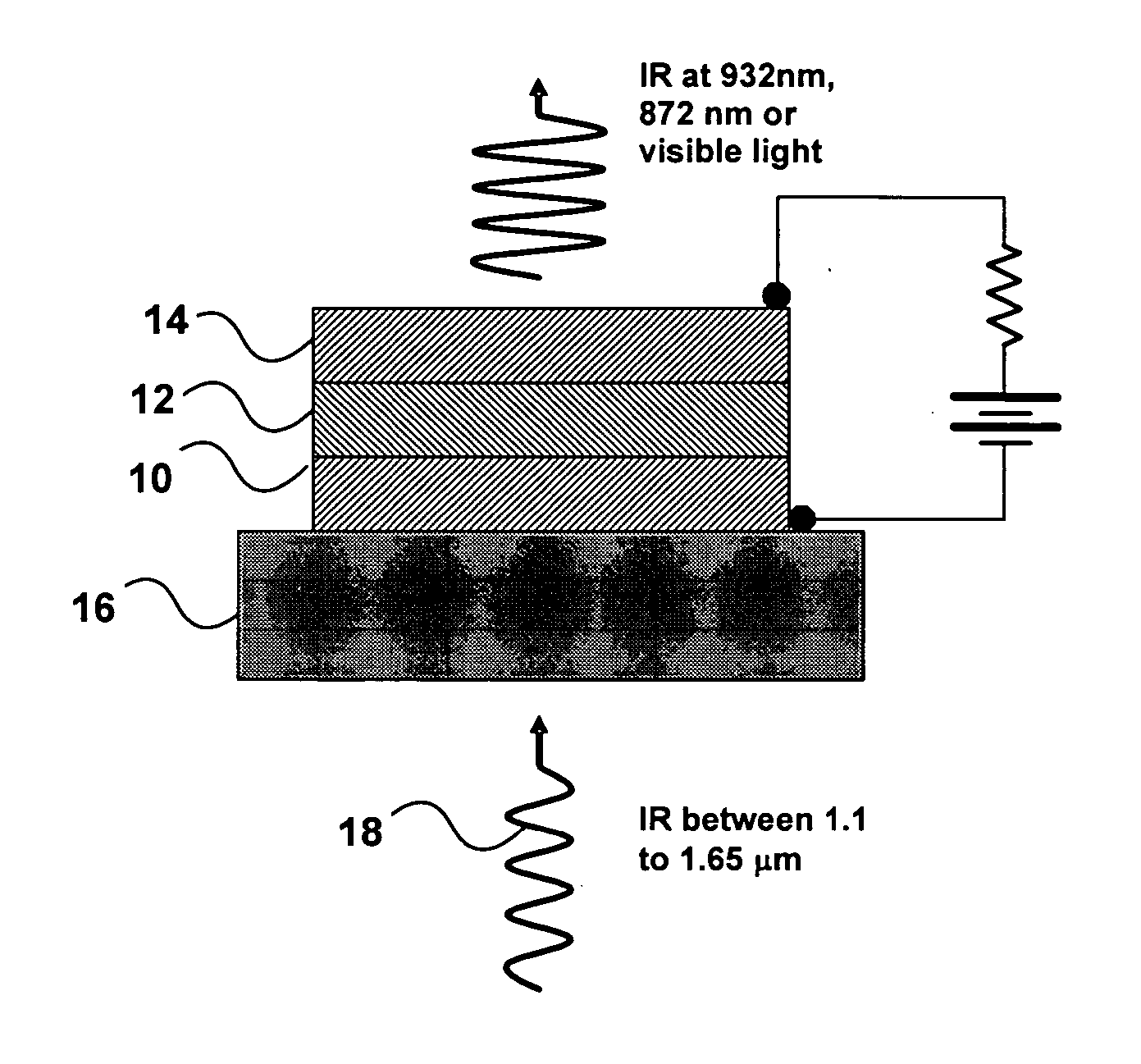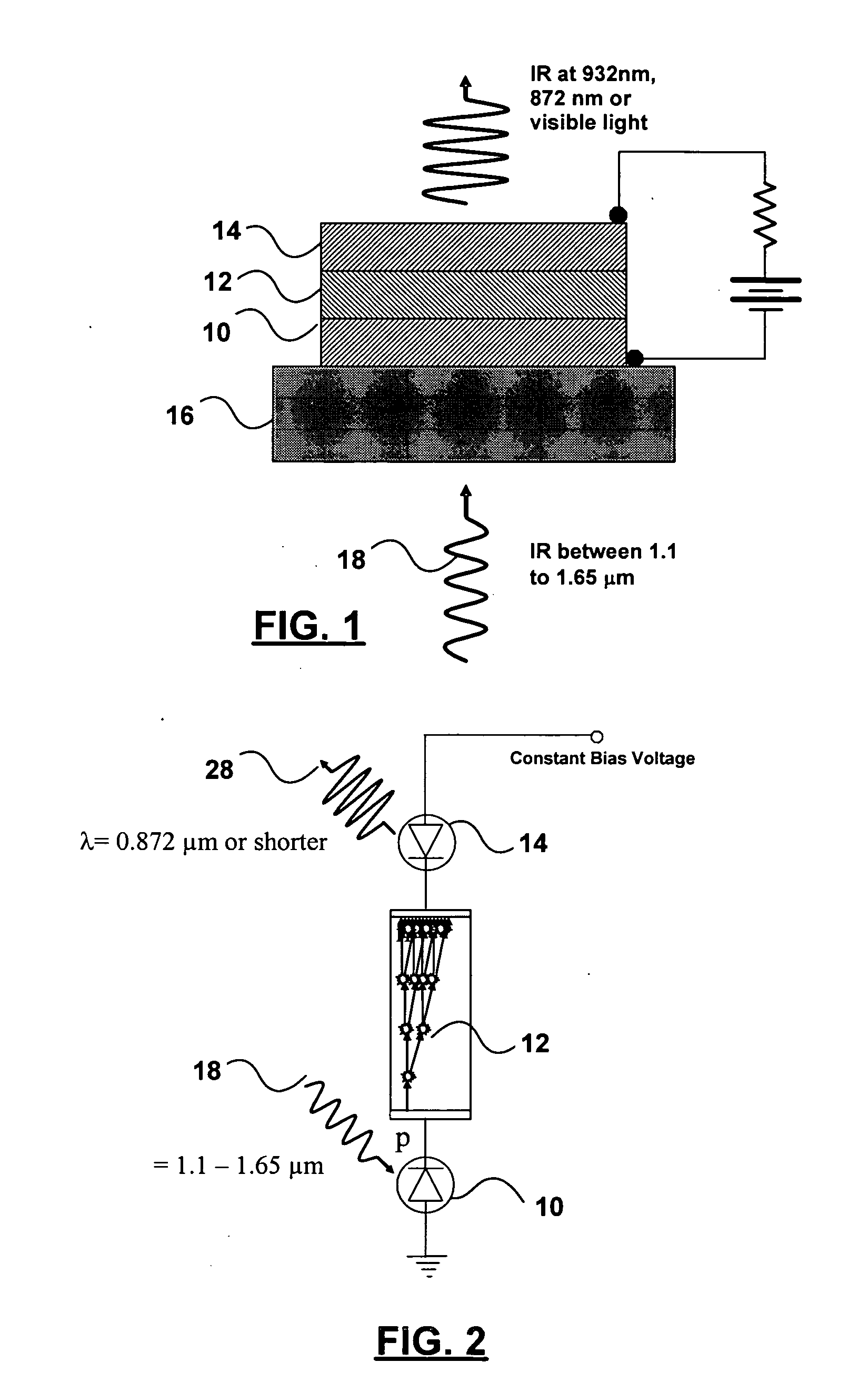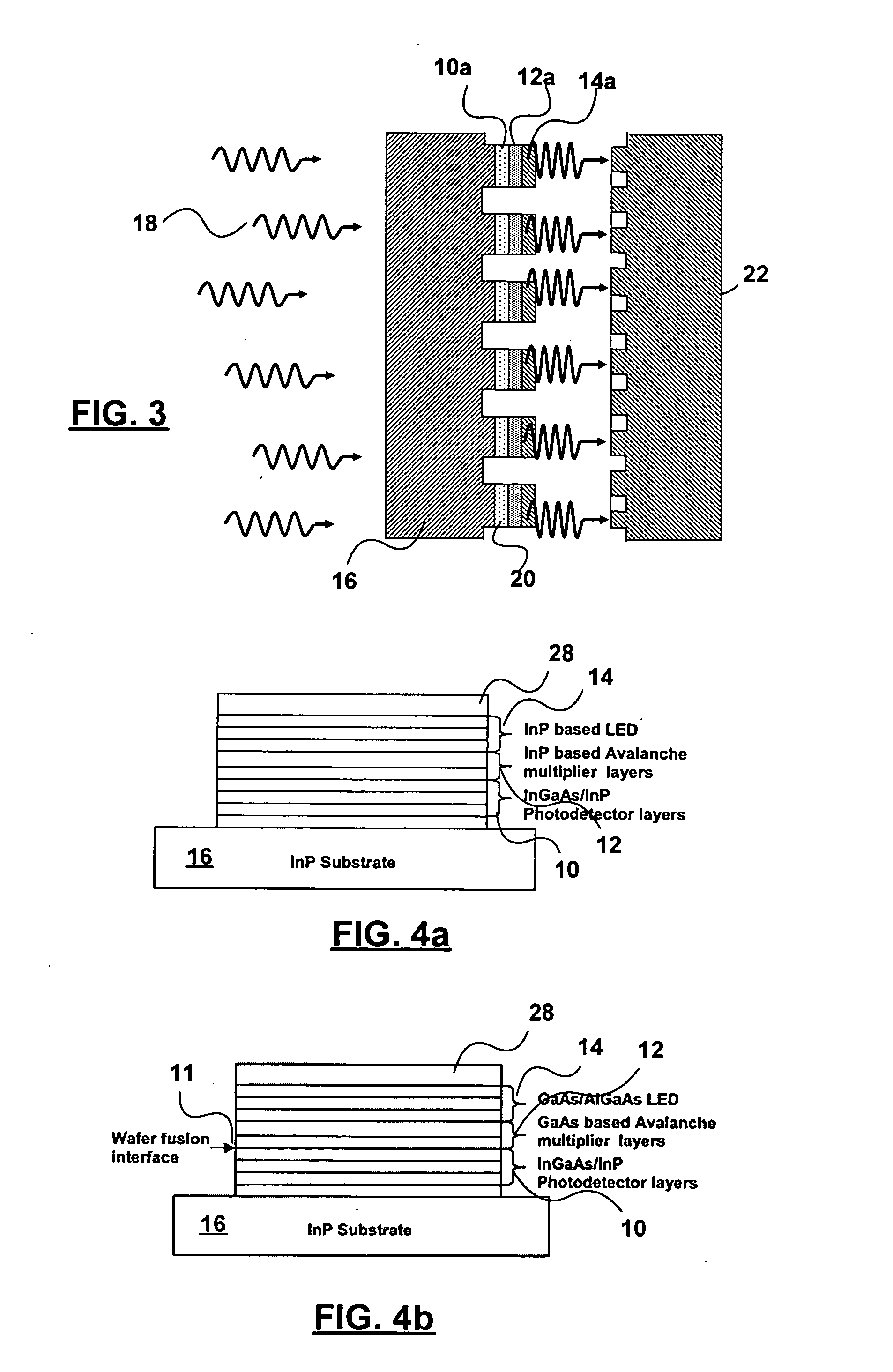Wavelength conversion device with avalanche multiplier
a conversion device and wavelength technology, applied in the field of photonics, can solve the problems of complicated manufacturing and high cost of arrays, and achieve the effect of improving device performan
- Summary
- Abstract
- Description
- Claims
- Application Information
AI Technical Summary
Benefits of technology
Problems solved by technology
Method used
Image
Examples
Embodiment Construction
[0039]FIG. 1 illustrates in schematic form one embodiment of the invention in its most basic form.
[0040] A photodetector (PD) 10, an avalanche multiplier 12, and an LED 14 are integrated on a substrate 16 in a stacked arrangement. The substrate 16 is transparent to the incoming IR energy (in wavelength range of 1.1 to 1.65 μm) to pass through it to the photodetector 10.
[0041] Upon application of a bias current, e.g. from a battery via a load resistor, to the stacked PD 10, avalanche multiplier 12 and LED 14 in series, the same current passes through all of the components. The incoming IR energy 18 generates signal photocurrent in the PD component 10, which is substantially amplified by the avalanche multiplier 12 and passes into the LED 14.
[0042] The increase of bias current due to the generation and amplification of the signal photocurrent leads to the increase of LED emission at 0.87 μm (or 0.932 μm, or visible light wavelength, depending on the materials used for the LED activ...
PUM
 Login to View More
Login to View More Abstract
Description
Claims
Application Information
 Login to View More
Login to View More - R&D
- Intellectual Property
- Life Sciences
- Materials
- Tech Scout
- Unparalleled Data Quality
- Higher Quality Content
- 60% Fewer Hallucinations
Browse by: Latest US Patents, China's latest patents, Technical Efficacy Thesaurus, Application Domain, Technology Topic, Popular Technical Reports.
© 2025 PatSnap. All rights reserved.Legal|Privacy policy|Modern Slavery Act Transparency Statement|Sitemap|About US| Contact US: help@patsnap.com



